2011 | Installation with chipboards, wood, 63 bulbs and notes on paper | Approximate installation (width x depth x height): 250.8 x 432 x 98.4 in. / 637 x 1097.2 x 249.9 cm. | Photos: Zacheta National Gallery of Art, Warsaw
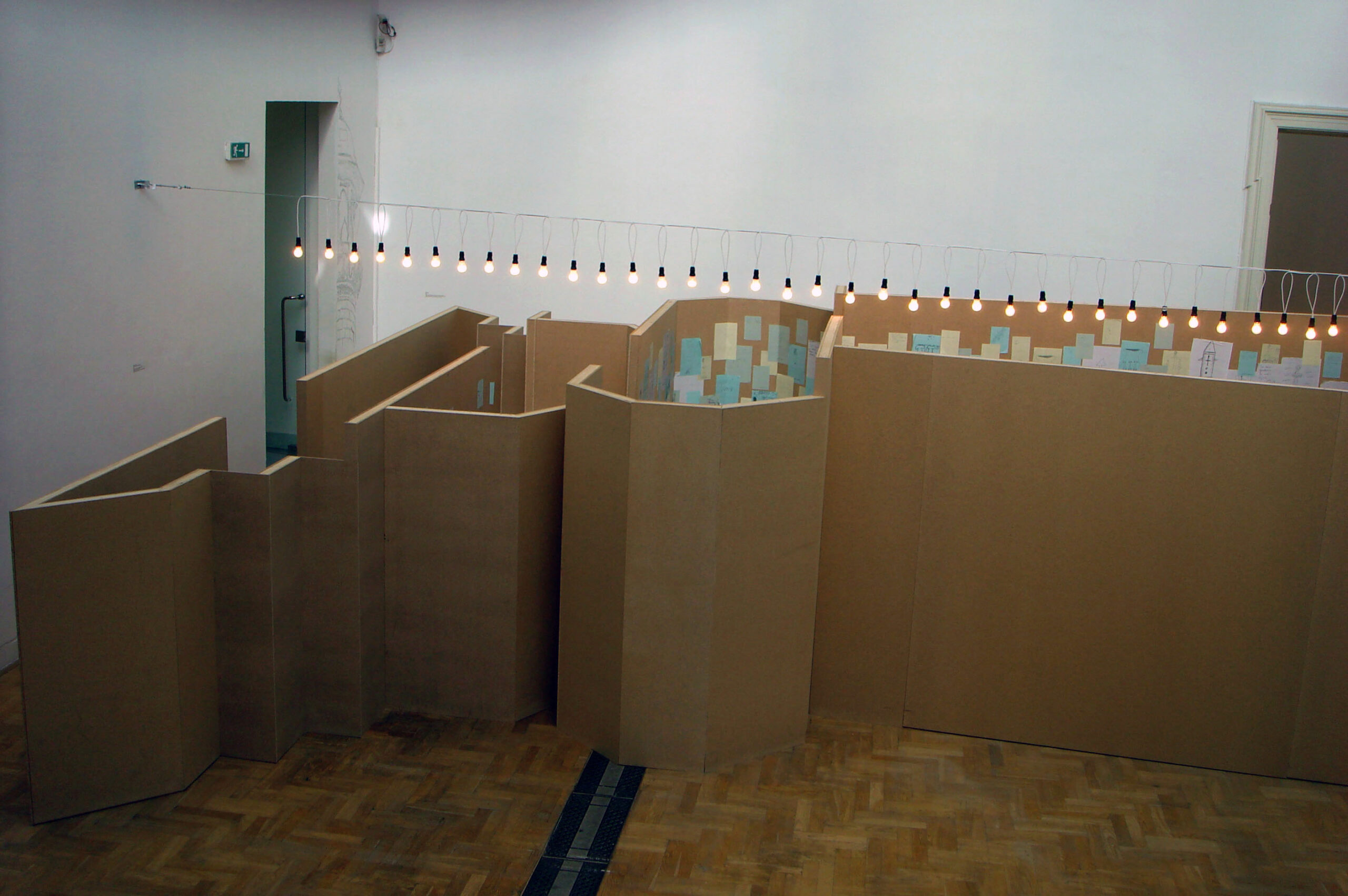
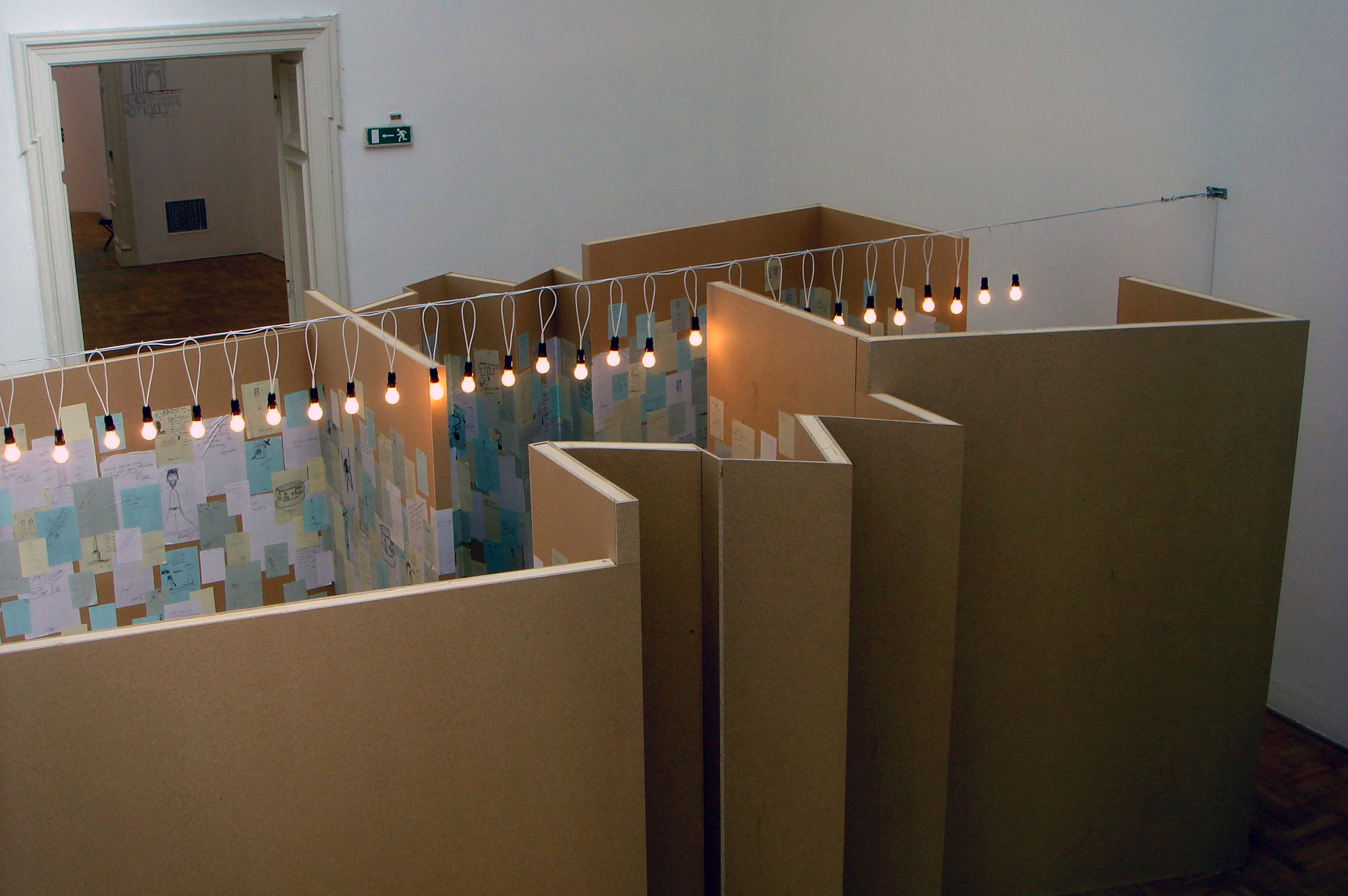
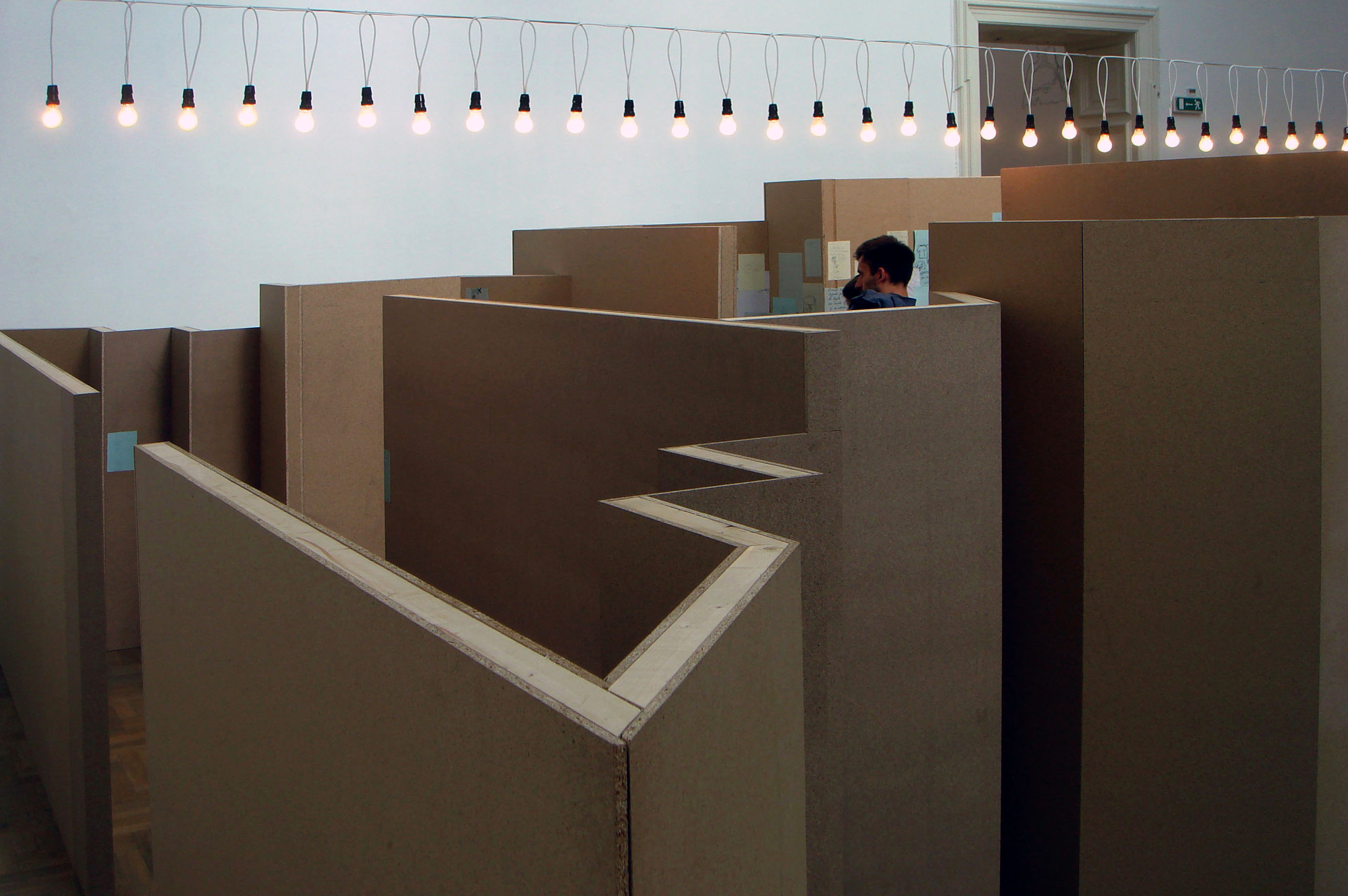
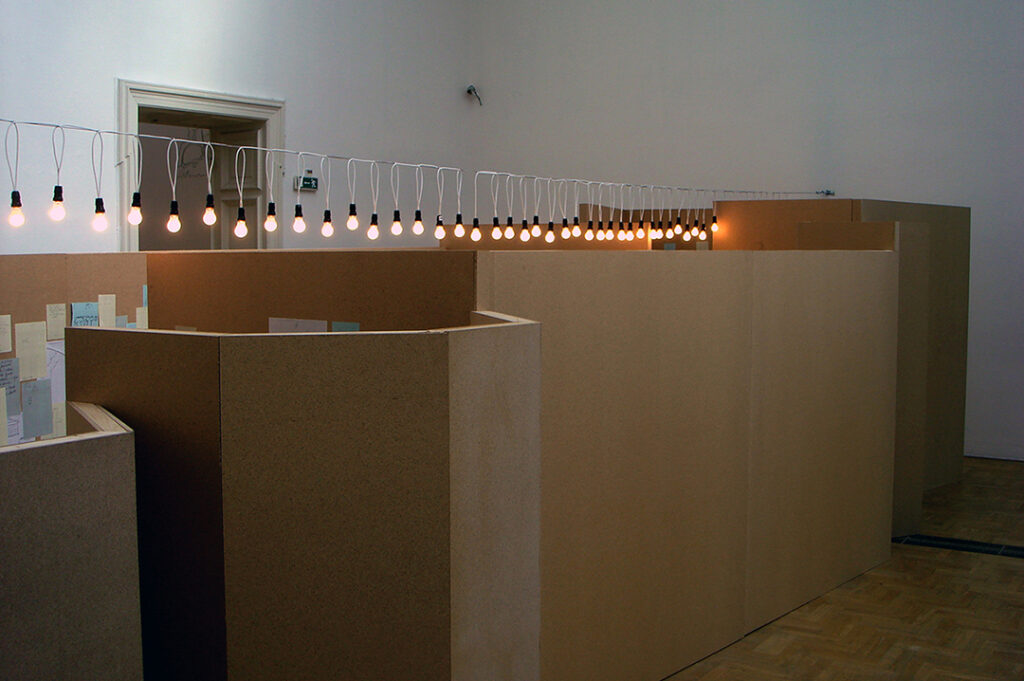
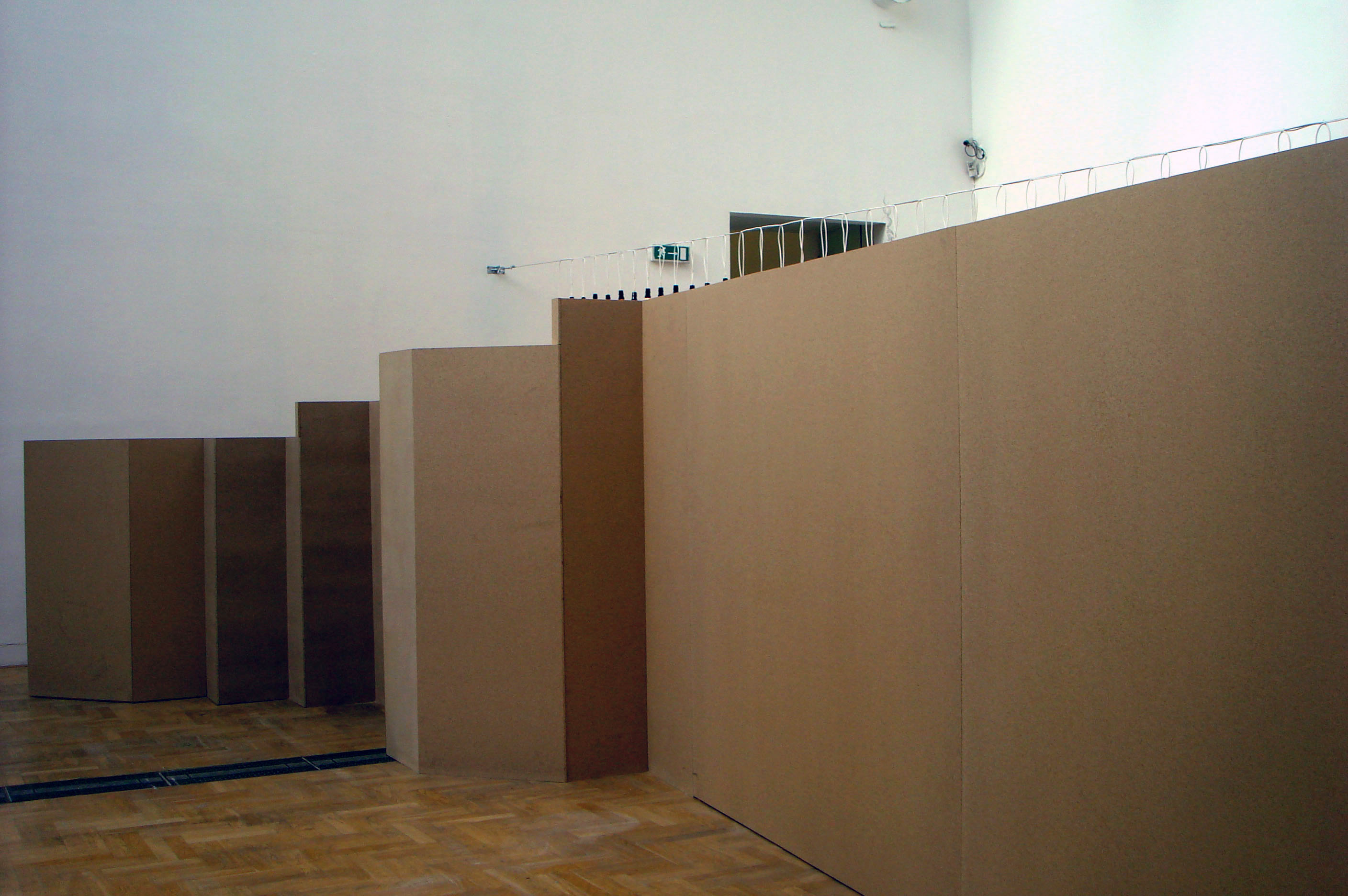
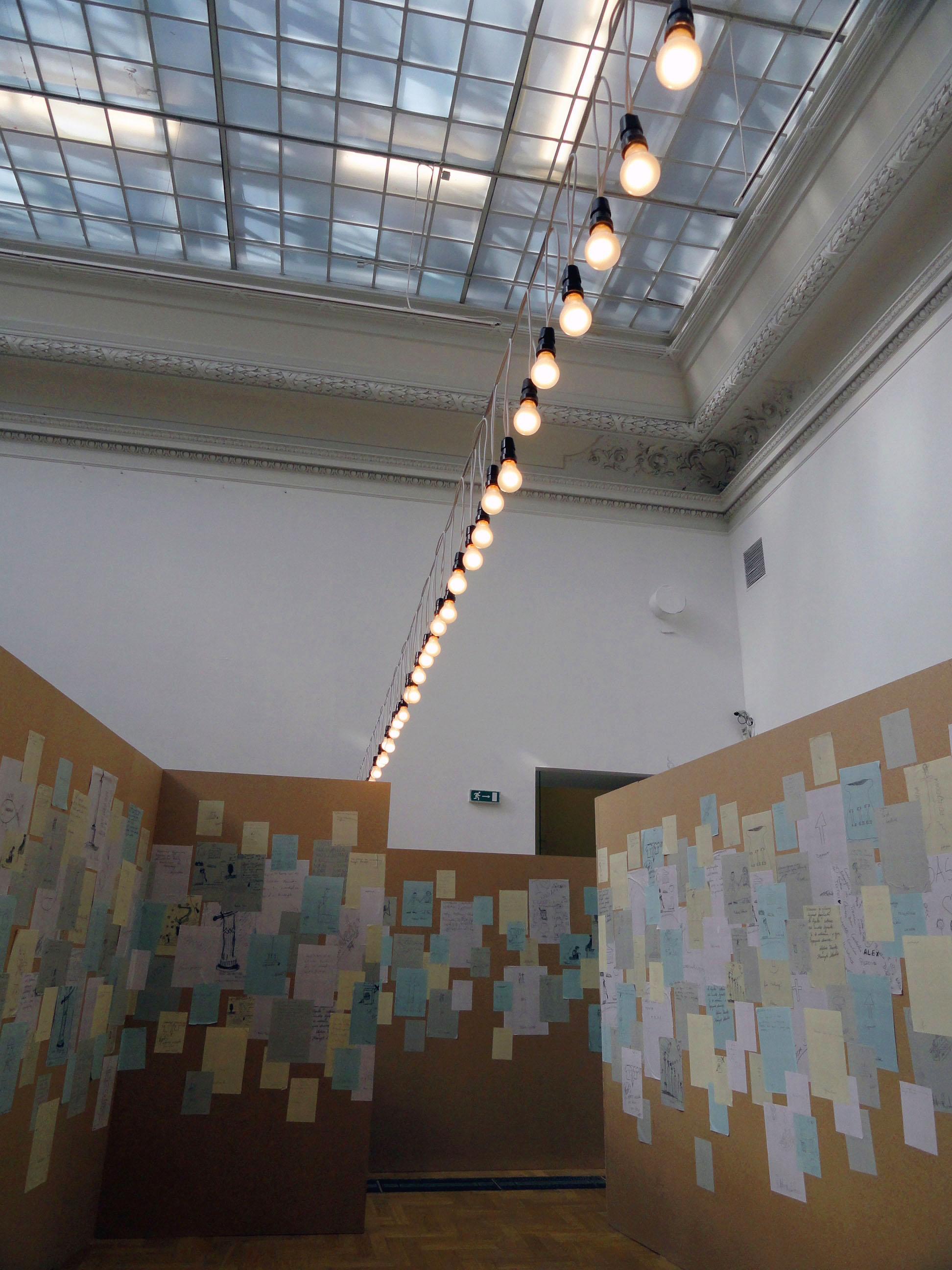
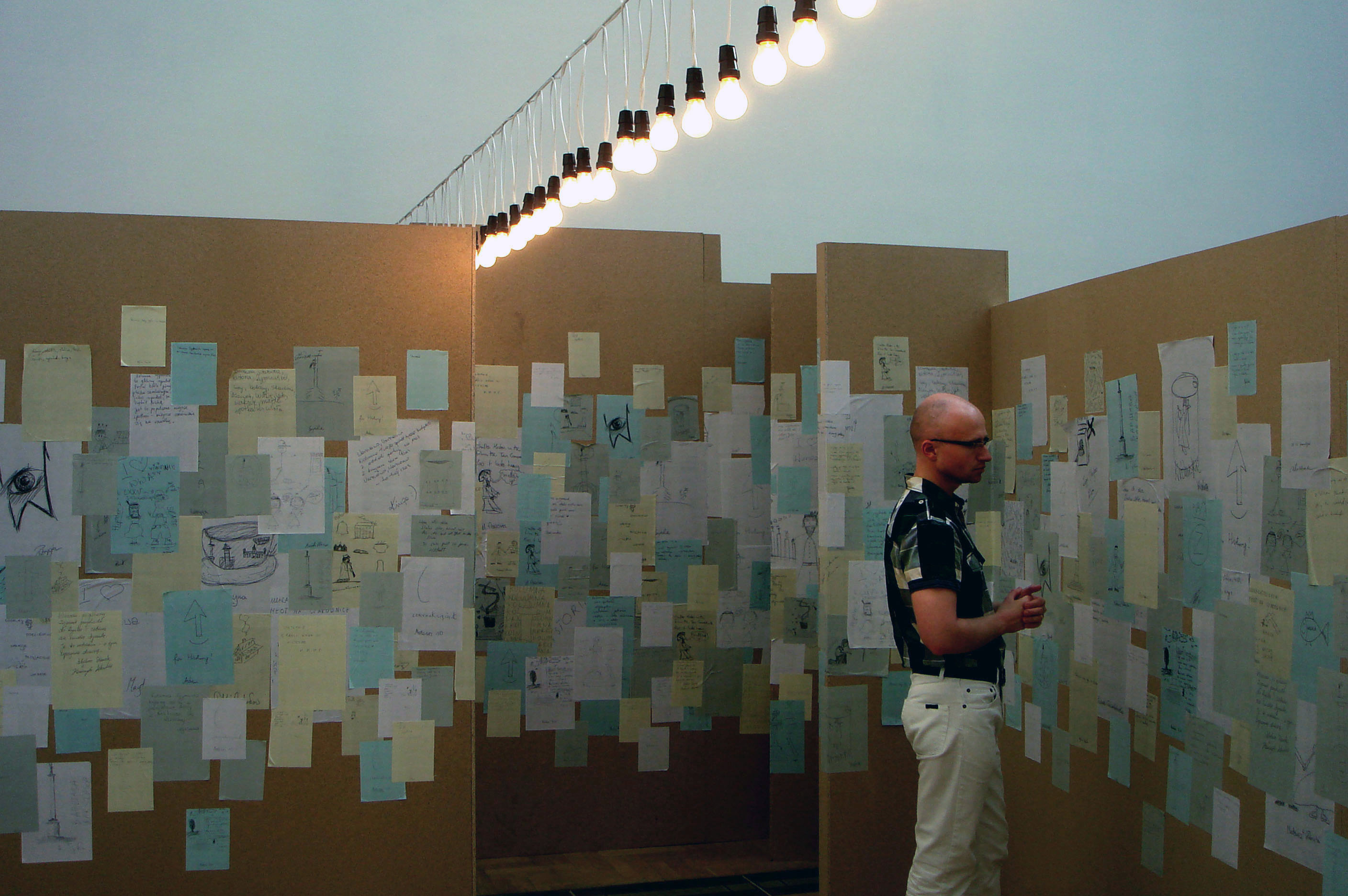
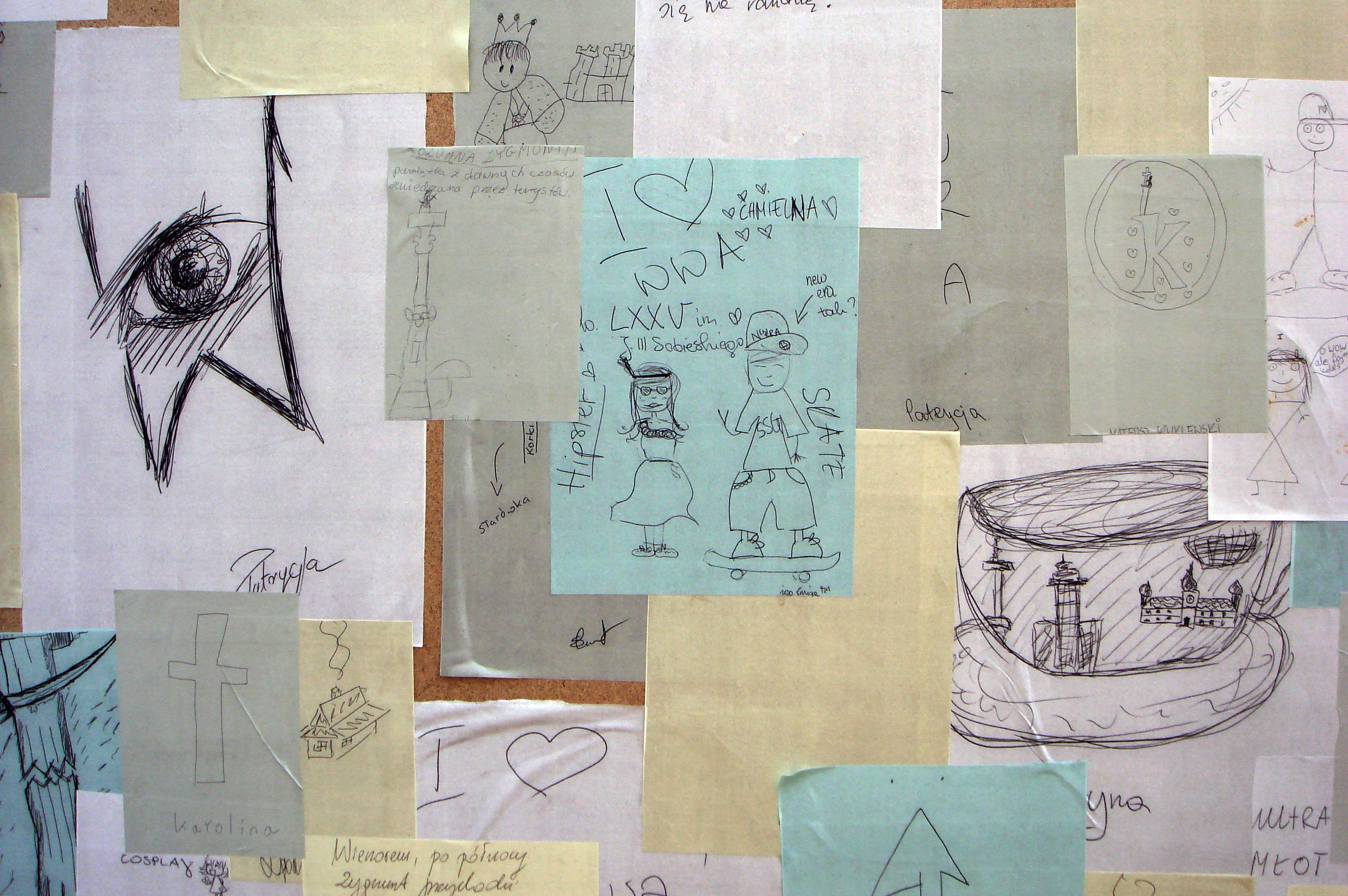
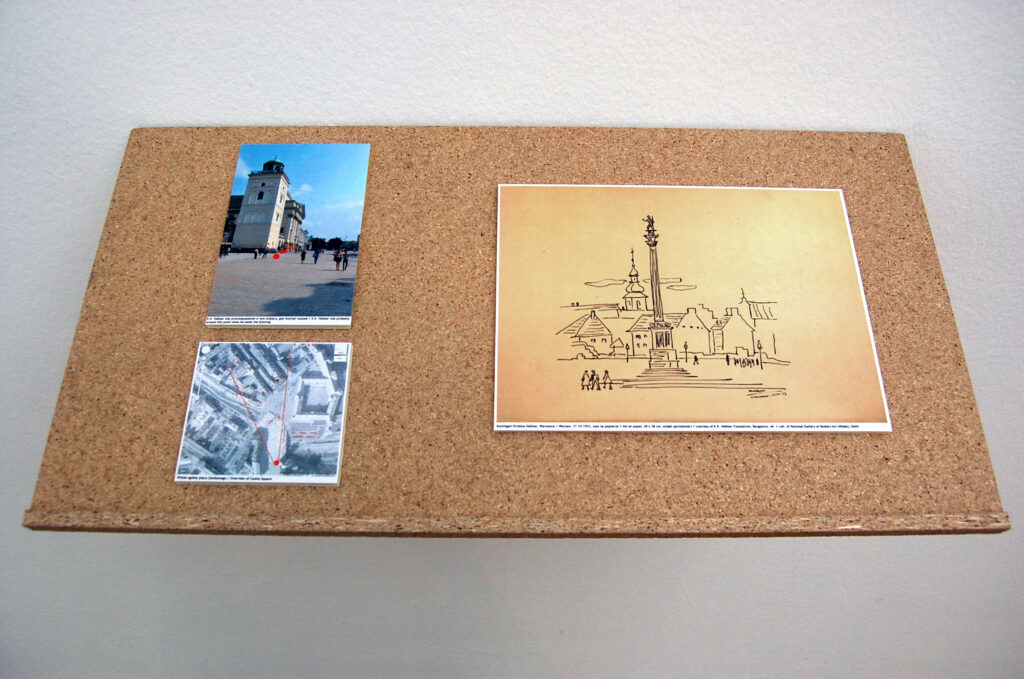
17th October 1953, is a large walk-in installation, made up of wooden partitions that are lined inside with several posters and 63 bulbs suspended above it. The artwork takes it starting point from a drawing made by the Indian artist, Kattingeri Krishna Hebbar, during his visit to Warsaw. The artwork’s title, 17th October 1953, is also the date inscribed on the drawing that shows a section of the Castle Square along with Sigismund’s Column. The column was first built in 1644 and was later destroyed on the night of 1-2 September 1944, by shells from a German tank during the German Occupation and was rebuilt in 1949.
The installation’s silhouette, when seen from above is a reference to the silhouette of a fallen down column. The 63 bulbs are in memoriam of the Polish resistance that lasted for 63 days during the German occupation. Having witnessed a very tragic past, what were Hebbar’s thoughts when he was drawing the column in its restored glory? As part of the research, the artist collected information from local people, who documented their random thoughts on paper as they saw the column in Warsaw’s Castle Square. Their name, date, time, location and approximate temperature was also recorded. These details were then printed as posters and collectively stuck towards the insides of the installation walls. This labyrinth of ethereal and unpredictable thoughts has become tangible through their association with words documented by strangers, which in many ways also became a social and political commentary of the column itself.
During the process of collecting factual to random information in relationship to the history of Sigismund’s Column (as also seen by Hebbar), the artist discovered varied nuances and meaning from what may appear as related to unrelated incidents. Whilst associating words with the square, the artist continues to focus on the historical incidents of the past and question what is universal and dissimilar within our present and global past.
In 2011, 17th October 1953, was first exhibited as part of a touring group exhibition, ‘Generation in Transition’ at Zacheta National Gallery of Art, Warsaw. The exhibition was curated by Magda Kardasz and the installation was produced and facilitated by Zacheta National Gallery of Art.